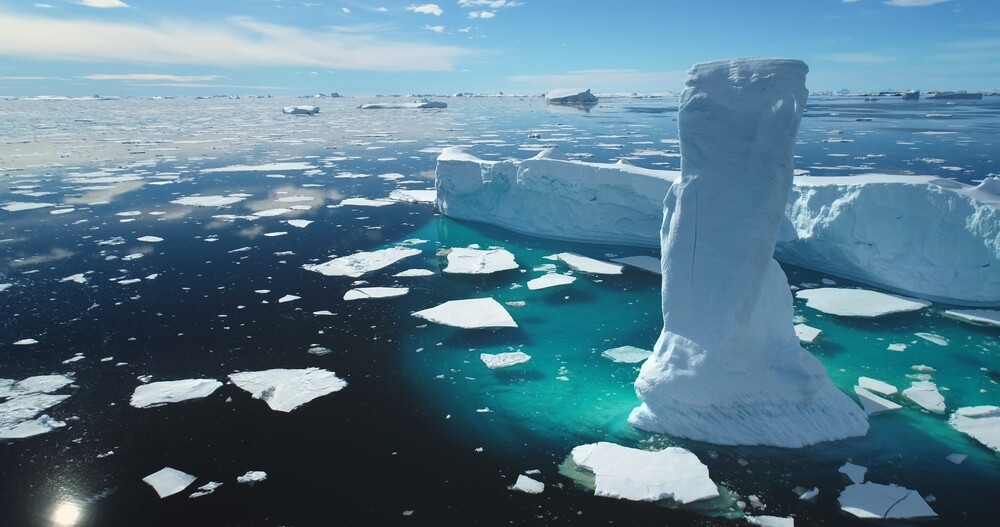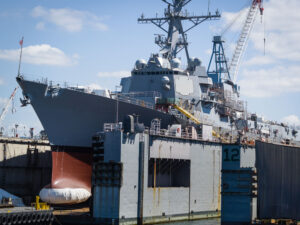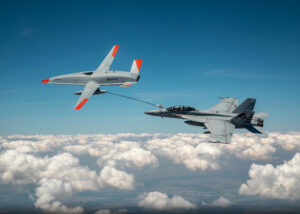The end of an era of cooperation is turning the Arctic region into an unsettled proving ground for nations competing for access to natural resources, trade routes and military advantage.
At the heart of the breakdown in relations is Russia’s annexation of Crimea and subsequent invasion of Ukraine, actions that alienated fellow Arctic nations. Further tensions have been caused by Russia’s increased activity in the Arctic due to warming waters that make passage possible as Russia expands investment there, asserts its boundaries and facilitates China’s entry into the region.
With the end of a cooperative framework, the Arctic is rapidly becoming the next contested area in great power competition, and the U.S. is in danger of being a day late and a dollar short. It is time to take the lead and invest both civilian and especially military resources in this incredibly important geo-political region of the world. Failure to do so may have serious consequences.
The strategic importance of the High North
The High North is defined as the region north of the Arctic Circle, or above 66.5 degrees latitude. The region encompasses 6 percent of the earth’s surface in an area of 8.2 million square miles, two-thirds of which comprises the Arctic Ocean.
The area is rich in resources and is estimated to hold one-third of the world’s natural gas, 13 percent of global oil reserves and vast quantities of minerals and rare-earth metals. The Arctic also offers three valuable trade routes for navigating the polar region, including the Northwest Passage, the Transpolar Sea Route and the Northern Sea Route, the latter of which is normally open for only a brief period each year.
Finally, the region is of continuing military strategic importance due to its proximity to the U.S. and Russia and as a crucial link between the Atlantic and Pacific theaters of operation. Its location is also essential for communications infrastructure including satellites.
Access rights to resources are held by eight Arctic nations including Canada, Denmark, Iceland, Norway, Sweden, Finland, Russia and the U.S. However, due to the region’s economic and strategic advantages, both Arctic and non-Arctic nations seek a presence in the region.
The end of cooperation
Until recently, the High North enjoyed geopolitical stability and cooperation among the Arctic nations, including the establishment in 1996 of the Arctic Council. An independent intergovernmental body, the council began its mission by serving as the leading intergovernmental forum promoting cooperation and coordination among the Arctic nations, Arctic Indigenous peoples and other inhabitants with a focus on sustainable development and environmental protection in the Arctic.
As the council evolved, its members supported creation of an adjunct Arctic Chiefs of Defense Conference consisting of periodic meetings during which the highest-ranking military leaders of the Arctic nations would resolve issues, foster collaboration and provide transparency for regional military operations. This stability earned the region the label of “High North, Low Tension.”
Unfortunately, these cooperation efforts were deeply damaged when Vladimir Putin illegally annexed Crimea in 2014 and then attacked the sovereign territory of Ukraine in 2022. As a result of these acts of aggression, the council members ostracized the Russian Federation and froze communications. Putin acutely felt this due to reliance on foreign investment and technology to fuel his plans to achieve polar great power status.
But Russia has proven surprisingly resilient, and its economy has rebounded. Its military has also been boosted by a resilient industrial base. There is currently no dialog with Russian political or military leaders in the chambers of the Arctic Council, and this has resulted in a situation akin to having a “hot line” where neither side picks up the phone when it rings.
Warming waters increase access and interest
The changing climate is also changing the dynamic. While accessing the Arctic’s resources and trade routes previously had been difficult due to the challenging environment, the region is now warming at least twice and perhaps as much as four times the global rate, contributing to a reduction in Arctic ice, which is now at historical lows. An examination of satellite imagery shows that the Arctic region is now more blue water than white ice.
With more open water and unhindered passage through the Arctic region for longer periods, the great powers are taking on a new level of interest. For example, Russia, with more than 50 percent of the Arctic coastline – and more than half of the Arctic population – has invested heavily in the economic, societal and military development of its Arctic zone.
It has also sought to monetize the Northern Sea Route, declaring that passage through the Northern Sea Route requires sovereign state permission, 45 days’ notice, pre-paid tariffs for safe passage and the requirement to use Russian pilots and Russian icebreakers as escorts, which is rejected by Western nations that demand the right to transit passage of an international strait in accordance with the U.N. Convention on Law of the Sea.
Furthermore, since 2001 Russia has challenged the status quo and traditional boundaries on the continental shelf bordering the Russian Federation in the U.N. Commission on the Limits of the Continental Shelf (CLCS).
In fact, in August 2007, the Russians planted a one-meter titanium flag at the base of the Lomonosov Ridge, near the North Pole, which the Russians claim is connected to the Siberian continental shelf of the Russian Federation.
Canada and Denmark challenge these claims with both submitting their own claims due to their own sovereign interest in oil and gas exploration in this area. The Russians have a good chance of a favorable ruling, potentially giving the Russian Federation control over 460,000 square miles or 70 percent of the Arctic continental shelf, inclusive of the oil, gas and mineral harvesting rights therein.

An increasingly militarized region
The Arctic was once known as a region of peaceful cooperation but is now becoming better known for its militarization. Many Arctic and non-Arctic nations now operate their warships and submarines in the Arctic Ocean, and there is no regulatory body to provide deconfliction or risk mitigation when different navies interact.
Seven of the eight Arctic Council nations are members of the North Atlantic Treaty Organization (NATO), and this allows for coordination and cooperation amongst those members’ navies, but neither Russia nor China has a seat at the table in NATO headquarters.
Accordingly, the Arctic region risks becoming a proving ground for large-scale exercises and testing and experimentation of Western, Russian and Chinese weapons of war. Russia has long used the North to conduct weapons testing. It is currently conducting sea trials of its mammoth new submarine, Belgorod, which is capable of deploying a nuclear-powered deep diving mini-sub and the dual-use Poseidon torpedo with long ranges that can traverse the Atlantic Ocean.
Likewise, the Russians have perfected hypersonic weapons, already employed in the Ukraine conflict, and the Arctic proving ground offers another area for testing and evaluation. Some Russian icebreakers are even capable of being armed with the Kalibr cruise missile, which is similar to the U.S. Tomahawk cruise missile.
Putin has also been expanding Russia’s global interests by strengthening partnerships with China and North Korea, while courting regimes across Africa and Asia. It is only a matter of time before the Chinese exploit their growing partnership with Russia in the High North by conducting military operations in the Arctic region.
We should not be surprised in the next few years when a Chinese nuclear submarine surfaces at the North Pole.
China’s interest in the Arctic is part of their long-term strategy of domination, including the development of strategic infrastructure. The Chinese have been in the market for an Arctic operating base for more than a decade to complete President Xi’s “One Belt, One Road” strategy.
In order to facilitate operations on the “Polar Silk Road,” the Chinese know that they must ensure a robust intelligence, surveillance and reconnaissance and communications architecture in space, thereby placing them in direct competition for bandwidth and orbits over the polar region.
As the ice melts, it will present opportunities for seeding new networks of critical undersea infrastructure (CUI) in the form of pipelines or communication cables, as well as the opportunity to interdict existing or future networks of CUI from Western nations.
The West falls behind
The Western allies are woefully behind in the race to establish an enduring presence in the Arctic region.
For the U.S. Navy, while submarines periodically operate in the High North, we no longer build surface warships fit for Arctic operations. The U.S. Coast Guard has one 48-year-old heavy icebreaker, Polar Star, and we have fallen behind in the timeline for delivery of a replacement. The planned U.S. Coast Guard Polar Security Cutter (PSC) is not scheduled to deliver until 2028, nor deploy until 2030 or later.
As a gap filler, the Coast Guard is considering the leasing of one commercial icebreaker while we wait for the arrival of the PSC. Though the Coast Guard’s medium icebreaker, Healy, has traditionally conducted the research missions of the Arctic, it is insufficient to fulfill the presence, research and law enforcement missions demanded by the evolving strategic environment.
By contrast, the Russians have more than 50 icebreakers, some of which are nuclear powered, giving them the ability to remain on station indefinitely. Likewise, the Chinese are following suit and building their own icebreaker fleet.
In order to compete in the polar region, it would be premature to flood the area with warships or icebreakers without a robust supporting infrastructure. Domain awareness and communications capabilities are at the forefront of requirements. Frankly, we have ignored the development of networks over the poles due to competing priorities.
There is currently limited capacity for Western geosynchronous orbiting satellites over the poles as well as limited land based supporting infrastructure. SpaceX has launched more than 5,000 Starlink satellites in the last few years. Intended for commercial use, Starlink has quickly adapted to military requirements, particularly during the war in Ukraine. The network currently has 200 dedicated satellites over in the polar region, but it is insufficient to rely on a sole source commercial solution to solve the current gap in bandwidth and military requirements.
Essential next steps
Clearly, more must be done.
U.S. Northern Command (NORTHCOM) has identified the critical need and is programming resources to fill the void. Meanwhile, we should take advantage of commercial solutions and provide incentives for others to follow suit.
The Saint Lawrence Island, which is part of Alaska, presents both a strategic foothold in the Bering Sea and opportunities for infrastructure investment. Since the Saint Lawrence Island is sovereign U.S. territory, it would be prudent to base the first tranche of land-based infrastructure in support of space operations there with deference to environmental concerns.
The need for infrastructure in the Arctic is not just pertinent to the ability of the U.S. to maintain a presence in the region and ensure freedom of passage through the global commons. The tangible threat to the homeland represented by Russia, and increasingly China, necessitates a close look at this issue in the context of our ability to effectively defend the homeland.
Specifically, substantial gaps exist in Arctic domain awareness and in the ability to command and control homeland defense forces in the far reaches of the region. A robust ability to communicate and to move data across the broad expanse of the Arctic is essential to both. The existing communications backbone organic to the Department of Defense (DOD) is wholly inadequate to the task, but there is strong potential to leverage commercial assets currently in place and planned for the future. DoD must redouble its efforts to engage with commercial partners if they are to invest commensurately in the capabilities required to meet defense needs.
While the U.S. and its allies face numerous problems around the world, we cannot ignore the Arctic region which serves as the “Trans-Polar Bridge” linking the Atlantic and Pacific theaters of operation. Investment is required now in order to build the infrastructure, operational capabilities, tactics, and procedures to ensure successful Arctic deterrence and defense.
A comprehensive strategy that advocates for a robust public-private partnership is needed to increase secure and non-secure internet connectivity, adequate satellite coverage to support multiple secure and non-secure communications architectures, undersea critical infrastructure that provides redundancy in vulnerable satellite communications architectures and persistent stare and continuous orbits of space-based intelligence, surveillance and reconnaissance assets.
Failure to do so has serious consequences for Western powers in light of both Russia and China’s aggressive commercial and military buildup in the region.







